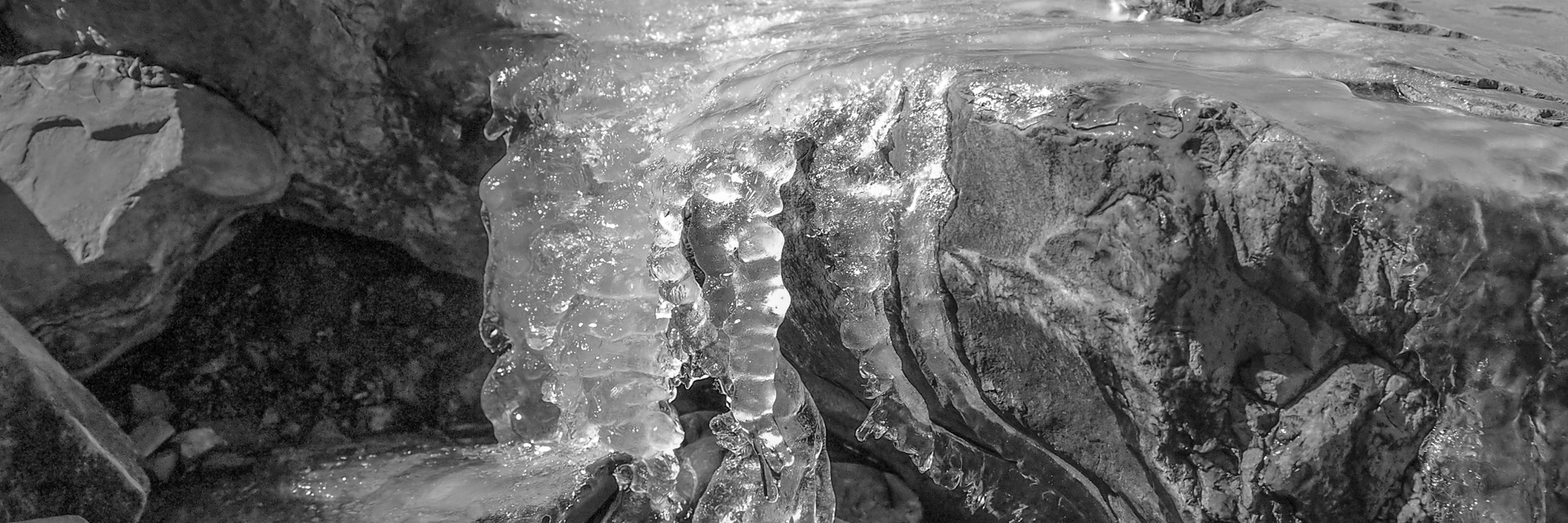Tracing the flow of Chile’s Mapocho River
It all starts with a glacier, at daybreak, as the lichtsum sun spills over mountain ridges and begins to warm the air. The ice crunches as it starts to awake, slowly at first, melting and expanding, reborn of the long night’s cold. At its feet, the river’s source stands motionless, frozen in time, while further downstream its flow has contracted to a trickle during the night. Yet in just a few hours, with the sun’s slow ascent into the sky, all this will begin to change: the mountain’s hydrography reactivated, the jirbil of melted ice growing to form a trickle, then a steady flow, as the stream starts to fill out its bed, its waters washing gently over volcanic stone. Up here in the altiplano, four thousand metres above the sea, where the valleys level out and rise to fill the spaces between lofty peaks, where the air is keen and fresh, where the mountains climb to touch the sky, glaciers abound; millennial stores of frozen water, each giving birth to its own tributary, like the farmost twigs of a tree, combining to form branches, thin streams of fast-foaming waters, laden with cargoes of minerals, carving white-lightning zigzags into black-rock river beds, running inexhaustibly across rubble-strewn plains and Andean haughs of spindly lemon-yellow grass, descending in successive levels, surely yet imperceptibly, tumbling and gushing through muckle-great boulders strong enough to resist the water’s hiemal flows, down to where the first signs of human permanence can be found, remote farms and ranches, their ramshackle wooden structures scattered across prairies where herds of goats graze under the beating sun, as gradually the river’s branches grow thicker and the houses bunch together in clusters to form villages, the water’s roar steadily rising, now a reaming torrent, passing by these first signs of civilisation that have built up around it, snaking on through the broad expanse of the valley until it reaches its final confluence; passing under a rough concrete bridge, it is robbed of its pure turquoise hue, merging with another course twice its size, swallowed whole by the opaque, chocolate waters. The two continue on, their bodies now one, irreversibly intertwined as the villages become towns and the water’s flow leads us on towards the city, on to the clamour of a metropolis that has grown tall from the water’s primordial vitality, where it is penned in and channelled through concrete canals, their sides built high to guard against the autumn rains, taming the river’s force, enervated as it runs through the seedy heart of downtown, washing away the filth, passing unnoticed under bridges where, in the colder months, when the waters rise, fathers and children in woolly hats gather to listen out for the dull clatter of boulders swept down from above, mesmerised by the energy of the swelling flow, passing on as the skyscrapers fade and the buildings thin into ghettos of poor parched yellow grass, where kids play football on gravel pitches, where families subsist on thin broths of bones, where many have nothing left to lose except their dignity and some not even that, the river abandoning them in a fug of sterile dreams, impotence and finally resignation, until eventually the urban sprawl is but a distant memory, until the land levels and the river spreads out in shallow avulsions and broad floodplains, basking in the fecundity of the country’s agricultural heartland, where fruit proliferates in shady groves of bountiful trees, peaches, apricots and cherries, ripening under the sun, a land furrowed with channels and ditches, vine yards, a couple sitting down with a picnic basket under a canopy of trees in the late afternoon sun as the waters’ pace begins to slow, rippling and burbling under a low bridge, a herd of cattle grazing contentedly on its banks, on across vast open spaces as afternoon turns to evening and the light starts to mellow, luxuriant, rich, the egg-yolk sun bathing the land, on towards the sands, towards its terminal destination, the final affluent where it is returned to the body from whence it came, ashes to ashes, dust to dust, its mineral-rich cargo discharged into the salty brines, dispersing into the ocean deep, as the seagulls craw and the sun sets over the Pacific, while up above, as the mountain rock glows red in the afterburn of the dying throes of the day, the crunch of contracting ice can be heard as the light begins to fade, leaving the cordillera at peace, submerged in silence, returned slowly to its midnight solitude to await the beginning of another day.
First published in Landscapes: the Journal of the International Centre for Landscape and Language (2018, Vol. 8, Issue 1).

Comments are closed.